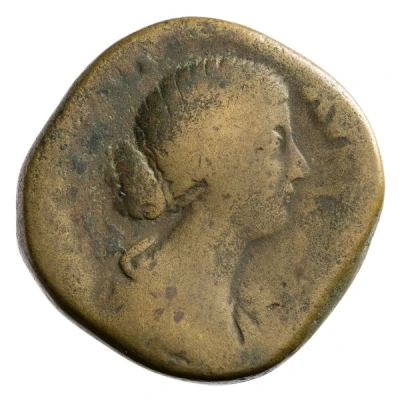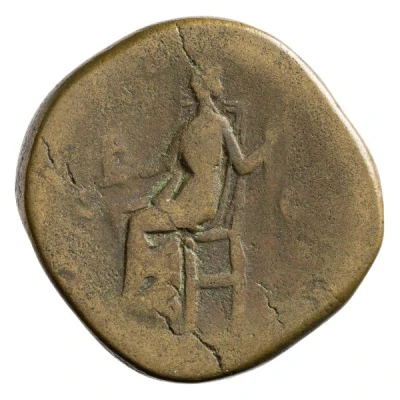Sestertius - Lucilla VENVS S C; Venus and Victory
| Bronze | - | - |
| Issuer | Rome › Roman Empire (27 BC - 395 AD) |
|---|---|
| Emperor | Marcus Aurelius (Marcus Aurelius Antoninus) (161-180) |
| Type | Standard circulation coin |
| Years | 164-169 |
| Value | 1 Sestertius = ¼ Denarius |
| Currency | Denarius, Reform of Augustus (27 BC – AD 215) |
| Composition | Bronze |
| Shape | Round (irregular) |
| Technique | Hammered |
| Demonetized | Yes |
| Updated | 2024-10-06 |
| Numista | N#264493 |
|---|---|
| Rarity index | 91% |
Reverse
Venus, draped, seated left, holding winged Victory in extended right hand and sceptre in left hand.
Script: Latin
Lettering: VENVS S C
Translation:
Venus. Senatus Consultum.
Venus. Decree of the senate.
Comment
Source:Online Coins of the Roman Empire (OCRE)
Interesting fact
One interesting fact about the Sestertius - Lucilla (VENVS S C; Venus and Victory) coin is that it features a unique combination of symbols and imagery that reflect the cultural and religious beliefs of ancient Rome. The coin's obverse side depicts the goddess Venus, who was revered as a symbol of love, beauty, and fertility, while the reverse side shows Victory, a personification of the Roman Empire's military prowess and dominance. The combination of these two figures on a single coin highlights the importance of both peace and war in Roman society, reflecting the idea that military power was necessary to maintain the empire's prosperity and stability. Additionally, the use of bronze as the coin's material adds to its historical significance, as bronze was a valuable resource during this time period and was often used for coins and other important objects.

